 There was a time, not too long ago, that I could count all the meals I had in a month with one hand. I’m exactly six feet tall, and at the low point of my anorexia I weighed 118.3 pounds. The exact number is important to note because my self-perception was so warped that I saw this as an accomplishment. I wasn’t 118.5 pounds nor did I round down to 118 when asked. I was a solid 118.3 and I felt invincible.
There was a time, not too long ago, that I could count all the meals I had in a month with one hand. I’m exactly six feet tall, and at the low point of my anorexia I weighed 118.3 pounds. The exact number is important to note because my self-perception was so warped that I saw this as an accomplishment. I wasn’t 118.5 pounds nor did I round down to 118 when asked. I was a solid 118.3 and I felt invincible.
My anorexia began in college. I had always been skinny but I had gained the freshman fifteen, a rite of passage for any college student. At the same time, my body was maturing, naturally bulking up, and letting go of its boyish figure. This too was a rite of passage. My best friend Yazmin was the first to notice this change when I came home during spring break.
“My abuela was telling me that your face has filled in. That you look fuerte,” she said.
Whether you’re gay or not, all men are expected to look fuerte: to have wide pecks and big Gladiatorial-like arms that are capable of lifting heavy things. I was never strong looking. When I was in elementary school my frail body was contentious. The other boys mocked me, telling me I needed to be on weight gainers from GNC. Even one of the homeroom mothers said I could be handsome if I played sports and stopped acting like a mariposita.
All my life I was the skinny boy who was the last to be picked for sports. My gay friends have told me that being the last one picked for basketball was a pivotal moment in their childhoods because it was in that moment they felt different and emasculated from the other boys.
For me, being the last one picked never bothered me. I hated sports. I preferred to be sitting on the benches with the girls doodling in notebooks and talking about their periods. As it turned out, I was born to be a mariposita.
Yazmin was right. My body had changed. I don’t speak for all male anorexics, but I didn’t want to be fuerte. I was proud of being effeminate. When I started dating boys, they liked me because I was tall and lanky. I was comfortable with who I was and feared my growing body would make me unattractive.
All it took to lose weight were ten dry roasted peanuts a day and several visits to a pro-anorexic message board. The pro-ana community was this counter culture group where we gave each other tips on how to starve and discussed our thinspirations.
“Water weight is for fatties,” one poster wrote. “Drink as little water as possible if you want to look like Nicole Richie.”
I weighed myself before and after a cup of water, and the poster was right. Those two ounces of water weight were the difference between feeling like a celebrity and feeling obese.
No amount of starvation could satisfy my hunger to be thin. I went from a waist size of 32 to 28 in just two months. The starvation felt justified but as with all anorexics the thinner I got, the more potent my body dysmorphia became. I now believed my bone structure was disproportioned, that my pelvis was larger than my chest, and I would look wide no matter what. This only encouraged me to continue starving for years to come.

Growing up, my dad was anorexic. He too was always a slender man and the disease hit him in his 40s when his body softened. We never spoke about it. The only time it was evident he was weathering the disease was when he’d lower the car window and shout to joggers, “stop eating dead animals!”
Dad overcame his anorexia after he was diagnosed with anemia. He just started eating again. It was unceremonious and he no longer looked like a man who was haunted by his weight. However, years later, when he saw me at 118.3 he faced his ghosts and asked, “are you anorexic cause of me?”
I woke up one morning to my heart racing and tightness in my chest. I hadn’t eaten in two days and feared the worse. I thought of Jeremy Gillitzer, the once beautiful male model who lost all bone density in his face and had starved himself into an early grave. I didn’t want to be in a coffin at twenty-four. I wanted to live.
Like my father, I too just started eating again. Eating again was the easy part. However, anorexia does not vanish, no matter how much you feed it. It’s living with the disease daily that’s difficult. Even now as I look at photos of me at 118.3 I have to stop myself from thinking my stomach looked bloated or that my arm had too much fat on it
In the years since my anorexia, I think of all the possible origins for my disease: rebelling against male stereotypes in the Cuban-American culture I was raised in, subconsciously following in my father’s footsteps, or my gender-bending attempts to be one of the girls. It’s callow to point fingers and truthfully, none of these were the cause of my disease. My anorexia was my own doing and I needed to come to terms with my changing body.
I’m heavier now. I don’t own a scale so I don’t know my exact weight, but I try not to care. Some days are easier than others but I eat healthy and have a strict gym regiment. I’m glad to be winning against my disease because I now truly understand what it means to be invincible, to see yourself in the mirror and see someone fuerte—not physically, but spiritually fuerte.


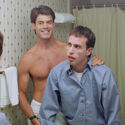

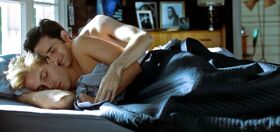



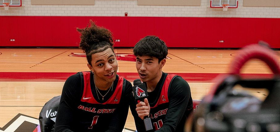
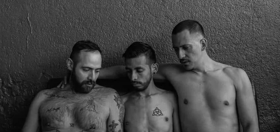



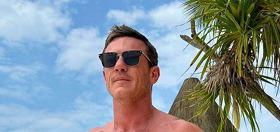



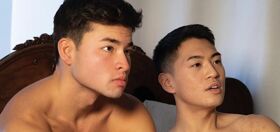
andy_d
Congratulations on your recovery. Any condition like this can be difficult to acknowledge, let alone take steps to overcome. Continued success. This is, IMO, an important article because of the continuing obsession with body image in society, in general, and, more pointedly in the Gay community.
libra
As someone who dealt with a less extreme form of this (and still does tbh), this was a refreshing article. Of course, Queerty’s good intention in combating body insecurity is somewhat marred by the post on swimwear just posted, with only guys portrayed that live in the gym. Maybe if posts like ‘morning goods’showed more diverse body types we could be a bit more effective in combating this?
mramseymd
Just one comment- please don’t blame your illness on yourself. Your anorexia was not your doing. We don’t yet fully understand the multiple factors behind anorexia- genetic, social, environmental, neurochemical, etc., etc. Your honesty in writing this article suggests strong skills to stay in recovery. Surround yourself with support. Wishing you all the best!
Rock Star
I am happy to see you have come to terms with your problem and you are an inspiration to those who have struggled with their anorexia. You look great and I can see you are proud of your accomplishment.
Stephen
“The only time it was evident he was weathering the disease was when he’d lower the car window and shout to joggers, “stop eating dead animals!””
I don’t get this part. Not eating meat does not equate to anorexia. Unless you are talking about the part where he was obnoxiously vocal about it, then okay.
tazz602
As another gay man who has dealt with this and Bulimia – I congratulate you on your recovery and telling the world. I think this is more common than people realize among gay men where our body is our image and how we are judged by everyone in any bar or venue we walk into. More gay men need to come out about their struggle with it and how they overcame it OR ASK FOR HELP.
Scooteroo
One issue that has always messed with my head was when I was sick in the past (cancer), and I lost about 40 pounds in a very short period of time, (prior to knowing I had cancer). I felt worse than I had my whole life, and friends and family would tell me how “healthy” I looked–especially my gay friends. Aside from my doctor, not one single person asked if I was OK. All I heard, was “you look great”, etc.
petensfo
As a society, we are prone to over and under-eating, exacerbated in gay circles because so much emphasis is put on physical appearance. Thanks for sharing your experience.
In my own family, especially in front of the younger kids, we’ve realized that everyone needs to be very aware of negative-talk around body-image. They are listening.
There are many resources for folks today. One would be http://www.OA.org where people can connect via on-line meetings & chat rooms, as well as find a local gathering.
Recovery from a disease like anorexia & bulimia is tenuous, and best handled one day at a time.
LadyL
@Scooteroo: Food (no pun intended) for thought. Thanks for sharing your experience.
oilburner
People like this annoy the crap outta me
And no I’m not fat either I’m skinny
balehead
Fatties have no problem asking if I am anorexic even though I am at fit 220lbs and 6’4……..so much jealousy…..
balehead
Love all the fat people feeling for this individual….crocodile tears?…
balehead
The swimwear guys aren’t anorexic..they work out., eat right and take care of themselves…jealous crocodile tears for sure…
Dionte
I wish my stomach was flat, I only stay thin with aerobirexia.
Merv
I think people have a skewed sense of how skinny is too skinny. You can actually be quite skinny and still be healthy. For a person 6’0″ tall, the minimum healthy weight according to NIH BMI charts is 137 pounds. Some will complain that that’s ridiculously skinny, but for someone like me who doesn’t bulk up no matter how much I exercise, it’s not ridiculous. I’m 6’1″, and at one point weighed 180 pounds, which is still considered normal BMI, but I was FAT. I had a belly, and felt sluggish. I eventually lost 25 pounds and looked and felt much better. For me, that was my healthy weight. Unfortunately, I’ve slacked off and gained almost 10 pounds since then, and it shows, so will probably hitting the gym a little more often. Anyway, the point is that you shouldn’t assume that just because a particular weight would be too skinny for you, that it would be too skinny for everyone.
Jake
@Merv: wow that was very well said. I am around 6 feet tall and around 130 pounds, but no matter how hard I try I cannot bulk up. Doctors say that even though to most people this is a low weight, it is actually normal for my body type/size. People need to know that there is a difference between underweight and having a low weight because weight is different for everyone.
FaerieLad
Glad to see you worked things out. Best of life, luck and love to you!
goldstargay
Great article. I too suffered from a spectrum of eating disorders in my early twenties and am now living a much healthier life that includes a healthy diet and exercise regime. Do I sometimes wish I was “just 10 pounds thinner”, of course, but I try to tell myself that I am doing the best with the body I have. I think it is important for men, gay men in particular, to speak out about eating disorders as they seem so prevalent in our community but rarely discussed honestly. I know many of my friends have seriously struggled with food and body image trying to live up to whatever gay ideal they had ingrained in their head (twink/jock/etc.) and the sometimes dire health consequences that go along with ED behaviors.
siddartha999
You are brave for posting this. You are beautiful, inside and, now more-so outside as you build the complete person you were always destined to be.
“I don’t own a scale so I don’t know my exact weight, but I try not to care.” = exceptionally excellent advice for most all people… be concerned with how your clothes fit, now you feel, when was the last time you hiked the dog, or yourself?, around the block & do not Do Not DO NOT be held captive by EITHER numbers on a dial OR images in ANY media [WHY do you think they call it PROGRAMMING?]!
“Some days are easier than others but I eat healthy and have a strict gym regiment.” – words to live by… I swim, myself.
“…spiritually fuerte.” – i likey.
Regards,
s999 / Will
ps – did I say you look stellar ? you do…
the other Greg
I think it’s interesting that several posters are quick to see the Evil Awful Gay Community behind all this, when he himself does no such thing.
spacegod
Huh? Neither photo shows an anorexic person.
I will always love and skinny–I am intensely turned off by beefcake and muscles.
spacegod
Grr. Hate this inability to edit.
“I will always love and be skinny.”
Stephen
^ Same here. Anorexia has more to do with diet, not with looks. Skinny does not necessarily equal malnutrition. I hate when people see pictures of skinny people and tell them to “go eat a sandwich”. I used to be fat and believe me the comments hurt no matter if they are aimed at someone who is skinny or fat.
winemaker
Dear Gregorio:
I read your story with much interest. It’s true that gay men are quick to judge each other by body type even before they meet you formally and get to know you. I come from the opposite side of the spectrum, so to speak. At 26 yrs. of age, I weighed a whopping 378lbs. I am 6’1″ tall and had a 54″ waist. It took coming out of the closet to change my life for the better. I’ll explain. I went to a gay bar on June 4, 1977 and upon entering, I confirmed what I knew for years, I’m gay! Looking the way I did, I was ignored and treated very rudely. At that moment, I decided that this was it, I needed to lose the weight and get into shape. I went on a strict diet, worked out 7 days of the week and before long, I started to see some results. It has been a rough 30 yrs, but I finally have lost over 200 lbs. Some of the men still are rude but after all these years, I realize that’s their problem, not mine. What I’m trying to say is “don’t change yourself for anyone other than you”. Someday you’ll meet a great guy who’ll accept and love you for who you are and the way you are, Trust me. All the best
blech
It’s a story, but I’m not sure he understands how he is *being*…most biomedical diseases from ICD-10 or the DSM-IV manual do not fit the majority of diseases found in clinical practice. What does that mean? Nothing is textbook and this guy was being the way he felt most comfortable given his situational factors at that time. I didn’t fit in during my early school years…was often picked last for sports, a drifter, achieved highly at music and in the fine arts, scholar,…however I was athletic…and embraced it for many years beginning late in high school and through college and my first career. Then, I started to decline…because it wasn’t really me. I didn’t want to *be* a brain-dead worker-bee *jock* who always took orders and said *yes*. Screw that! I hike 10K foot mountains like it’s no big deal and ski double blacks. However, I am still 5’11” and 138 lbs. To hell with the stereotypes, get angry, and be who you want to be…not how you *look*…and as for sex, it gets less interesting with age. Libido declines naturally in all men and life gets easier because you stop thinking about this petty crap. Get it?
Rusty
@tazz602: Me too, as a senior at 5’4″ I weighed 89 lbs soaking wet. At 62 it has gotten better I weigh 98 lbs BUT if I over eat it still comes up I think my system has conditioned to it.
Revan46
Personally I think the writer was very cute (I assume both are his photos). But I actually like his “after” photo more. He’s cute when skinny, but even more so plus handsome now that he’s a healthier weight and “beefed up” as it were. I realize this article is about anorexia…but I wanted to point out that he is very attractive in my opinion.
LongIslandGayPhotos
@Scooteroo: First of all, Scooteroo I do hope you are fully recovered from your cancer! Back in the 2001 to 2003 time frame I lost about 70 pounds, going from a peak of 280 down to 210 (which according to the weight charts was still being overweight!). But my loss was through carefully keeping track of what I ate and an exercise program. And unlike your experience, I had friends asking if I was OK! Changes at work killed my time for exercise and by 2011 I was back up to 280 🙁 But I’m retired now, and that same combo of being careful about what I eat again and exercising regularly has me down to 249 now.
Dinodogstar
PLease know, if you are here reading this article, to become better at the pro-ana game, then realize that the very face of anorexia in men, Jeremy Gillitzer died from this illness. He had been open and honest, not to help further the pro-anorexia wishful, but to encourage no one to pursue it as some kind of cultural game or pastime. IT’s been a long and painful road for me, and please know that eating disorders destroy lives, your dreams, and your future. I embraced it, choose to pursue it, and it’s nearly cost me my life on a few occasions. Starving will make you depressed, and will not then serve to be beneficial at all really. PLEASE don’t jump down the rabbit hole of eating disorders; it’s not something you will be able to easily crawl out of. I am not healthy now, and if i had really had self-esteem and an optimistic goal, this is not the way that would play out for me. Throw yourself, not into starving and idealizing, or wanting to be the sick person. Health and strength are much finer and more productive ideals to work towards. If you do have an eating disorder, there is real help available. Fight for your life, and not just the outside oppressing people who make your life so challenging, but the inner self that tells you you are not good enough to feed and take care of. It’s sad, pitiful and the opposite of being attractive.
Dinodogstar
If anyone could direct me to an on-line support and health advocacy group for FORMER suffers of these illnesses, I would be incredibly grateful for that. If it geared towards men, and then even if for gay men, then please reply to my message…..
It’s been a terrible run for me, and i never cared enough about myself to treat myself right. If i knew of, say a mother starving her child, or an adult starving their elderly parent, I would be angry, justifiably so. But yet, I could not extend that same concern and care for myself. Stop, if you can; if not, get help. Or you will find yourself at 40, still engaging in self-destructive and defeatist behaviors and thinking.